|
Recently, Sigma introduced a new lens to the market, with a focal length of 30mm and aperture 1.4 – it is mainly intended for use on DSLR cameras with a crop factor, to enable a focal length of 45-50mm after the crop factor. It is supposed to replace the classic 50/1.4 lens on the FF cameras.
There are few lenses at this range: Nikon has the old, manual, 35/1.4 – an optically good lens, but not an AF, and the AF 28/1.4, which is the most expensive short focal lens in Nikon’s line.
Its price in the USA is about $1,700 for the USA version, and about $1,450 for the “gray” version.
This Sigma is sold in the USA for $430 – about a quarter of the price of the equivalent Nikon.
Is it worth paying 4 times the price for an additional 2mm? The test I ran can answer this question.
Generally one can say that the longer the focal length, a large aperture is not as “destructive”. For Nikon lenses, the 85/1.4 lens is very sharp even with a wide-open aperture, the 50/1.4 is slightly less sharp with a wide-open aperture, the 28/1.4 is “soft” with a wide-open aperture. This rule has exceptions of course, but usually it can serve as a guiding rule for all manufacturers.
Why do we need this lens anyhow?
On the face of it – it introduces twice the amount of light to the camera than a lens with a maximal aperture of F:2 and enables easier focusing under poor lighting conditions.
The main problems with lenses of a huge aperture, is the tiny/shallow depth of field. With a wide-open aperture, a slight deviation in the focusing will shift the focus from the eye to the ear, or will make the nose sharp and the rest vanish into blurriness. Let's start by describing the lens and comparing it to the Nikon 28/1.4 (ignoring the price differences): Minimal focal length: Sigma- 40cm, Nikon – 36cm (not much of a difference).
Enlarging coefficient in minimal focusing: Sigma – 1:10, Nikon – 1:8.3 (a slight preference to the Nikon).
Filter diameter: Sigma – 62mm, Nikon – 72mm.
Weight: Sigma – 430gr, Nikon – 510gr.
Structure: Sigma – 7 elements in 7 groups, Nikon – 11 elements in 8 groups (the Sigma is designated for DSLR and the Nikon for FF).
Length: Sigma – 59mm, Nikon – 78mm (the Nikon is longer).
Diameter: Sigma – 75mm, Nikon – 75mm.
The Sigma is wider than long, and one can feel it when held in his hand - its balance seems strange a bit.
I placed the Sigma on the D2X for testing, to “wear it out”, and see what it can really do.
Upon initial testing: the focusing is swift, even in poor lighting conditions – the lens does what it is expected to when purchasing a 1.4 lens.
Problem number 1 – it does not always focus on the correct object, partially because it has elements with lots of contrast on the focusing plane and the camera gets confused. It does not really know what to focus on.
When the lens is wide open, focus must be right on spot otherwise the object you want to shoot is out of focus.
The second reason is because it does not easily “talk” with the D2X. But, an additional press halfway usually brings it to the correct location.
If one understands and acknowledges the problem, one can bypass it by performing a double half press which is, in any case, second nature to me.
One does not have great expectations for the frame edges from such a wide lens with a wide-open aperture, and indeed it works as expected.
The question is how does it perform at the frame center. According to the MTF, the Sigma is sharper than the Nikon at the frame center, and its sharpness drops towards the frame edges (APS), while the Nikon maintains sharpness in this range.
All this is theory, what counts is the practical test.
A quick glance into the internal parts of this lens reveals an aperture with 7 straight leaves, not curved, and to add insult to injury, when the aperture is closed (F:16), they are not even at the same length.
As the aperture opens, they get closer to each other – but do not really equal in length. In comparison, Sigma’s 150/2.8 lens, which I have tested in the past had 9 slightly curved leaves which gave it a fantastic bokeh.
Why Sigma chose to revert to straight leaves I don’t know.
The first test I performed – the sharpness test with aperture 1.4, with a bright back light. This is a very harsh test – since the backlight can bring down the internal contrast and lower the visual sharpness - but this did not happen:  | | Model: NIKON D2X Exposure Time: 1/1000sec F Number: 1.4 Max Aperture Value: 1 Focal Length: 30mm Exposure Program: Aperture priority Exposure Bias Value: 0 ISO Speed Ratings: 125 Metering Mode: Center Weighted Average White Balance: Auto white balance Flash: Flash did not fire Focal Length In 35mm Film: 45 Date Taken: 2005:12:17 13:06:26 Color Space: sRGB |
The lens passed this test easily. A wide-open aperture, there are plenty of sharp details at the focusing point, and the backlight had no influence at all. This points out the high quality of the lens coatings - very good.
The second test – the lens’s bokeh – how does it produce a bokeh with such a poorly structured aperture.
The test was performed with aperture 2.8 and with bright spots in the background – the perfect recipe for failing the lens.
To my surprise, it performed quite well. The blurry bright spots acquired the shape of the aperture but very softly, without creating a distraction:  | | Model: NIKON D2X Exposure Time: 1/160sec F Number: 2.8 Max Aperture Value: 1 Focal Length: 30mm Exposure Program: Aperture priority Exposure Bias Value: 0 ISO Speed Ratings: 125 Metering Mode: Center Weighted Average White Balance: Auto white balance Flash: Flash did not fire Focal Length In 35mm Film: 45 Date Taken: 2005:12:17 13:07:05 Color Space: sRGB |
The next test, an additional bokeh test, was performed with aperture 2. The lens presents a very nice bokeh, I would give it a grade of 8 out of 10 for the bokeh test, even though it has this problematic aperture:  | | Model: NIKON D2X Exposure Time: 1/640sec F Number: 2 Max Aperture Value: 1 Focal Length: 30mm Exposure Program: Aperture priority Exposure Bias Value: 0 ISO Speed Ratings: 125 Metering Mode: Center Weighted Average White Balance: Auto white balance Flash: Flash did not fire Focal Length In 35mm Film: 45 Date Taken: 2005:12:17 13:15:19 Color Space: sRGB |
The next test was terribly cruel – bright skies, a wide-open aperture while checking the lens’s CA:  | | Model: NIKON D2X Exposure Time: 1/2500sec F Number: 1.4 Max Aperture Value: 1 Focal Length: 30mm Exposure Program: Aperture priority Exposure Bias Value: 0 ISO Speed Ratings: 125 Metering Mode: Center Weighted Average White Balance: Auto white balance Flash: Flash did not fire Focal Length In 35mm Film: 45 Date Taken: 2005:12:17 13:10:21 Color Space: sRGB |
It failed this test, but I am not surprised at all. The majority of large lenses would fail this test. It shows a lot of colored fringes of what was out of focus.
I carried on with the CA test, this time with aperture 4 at the picture edges against a very bright light. In this test I received a reasonable and acceptable amount of CA. Upon further closing of the aperture, the situation improved. The following is the aperture 4 result: 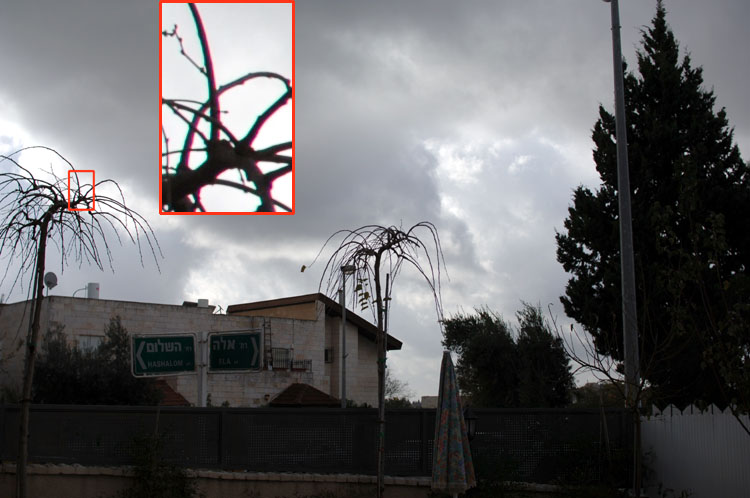 | | Model: NIKON D2X Exposure Time: 1/3200sec F Number: 4 Max Aperture Value: 1 Focal Length: 30mm Exposure Program: Aperture priority Exposure Bias Value: 0 ISO Speed Ratings: 125 Metering Mode: Center Weighted Average White Balance: Auto white balance Flash: Flash did not fire Focal Length In 35mm Film: 45 Date Taken: 2005:12:17 13:09:18 Color Space: sRGB |
In the color test, the lens is almost totally neutral and does not tone the picture (perhaps a slight coolness – but it’s hard to know, since the light outside was quite cold):  | | Model: NIKON D2X Exposure Time: 1/125sec F Number: 2 Max Aperture Value: 1 Focal Length: 30mm Exposure Program: Aperture priority Exposure Bias Value: 0 ISO Speed Ratings: 125 Metering Mode: Center Weighted Average White Balance: Auto white balance Flash: Flash did not fire Focal Length In 35mm Film: 45 Date Taken: 2005:12:17 13:05:42 Color Space: sRGB |
The flare test was perfect. The sun burnt my retina, but there was no flare to be found in the frame – excellent:  | | Model: NIKON D2X Exposure Time: 1/5000sec F Number: 4.5 Max Aperture Value: 1 Focal Length: 30mm Exposure Program: Aperture priority Exposure Bias Value: 0 ISO Speed Ratings: 125 Metering Mode: Center Weighted Average White Balance: Auto white balance Flash: Flash did not fire Focal Length In 35mm Film: 45 Date Taken: 2005:12:17 13:58:57 Color Space: sRGB |
I tested it for close range shooting, and indeed, the minimal distance is according to the specifications. The lens does not let you get close, but from the minimal distance, one can achieve very good quality. The picture was taken with aperture 2.8 - this is certainly not a macro lens: 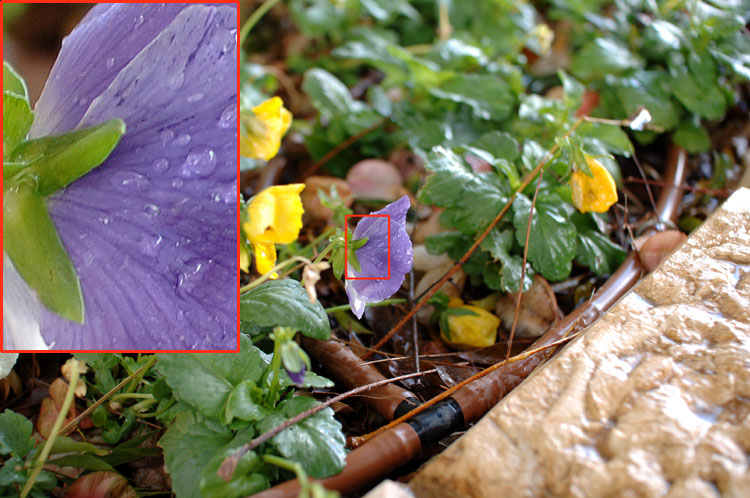 | | Model: NIKON D2X Exposure Time: 1/50sec F Number: 2.8 Max Aperture Value: 1 Focal Length: 30mm Exposure Program: Aperture priority Exposure Bias Value: 0 ISO Speed Ratings: 125 Metering Mode: Center Weighted Average White Balance: Auto white balance Flash: Flash did not fire Focal Length In 35mm Film: 45 Date Taken: 2005:12:17 13:07:30 Color Space: sRGB |
I checked its ability to separate fine details of similar tone – the microcontrast test. The test was performed with aperture 2.8, and the next two examples show it performs well very easily. Take notice of the lemon in the background in the first example – a perfect smear: 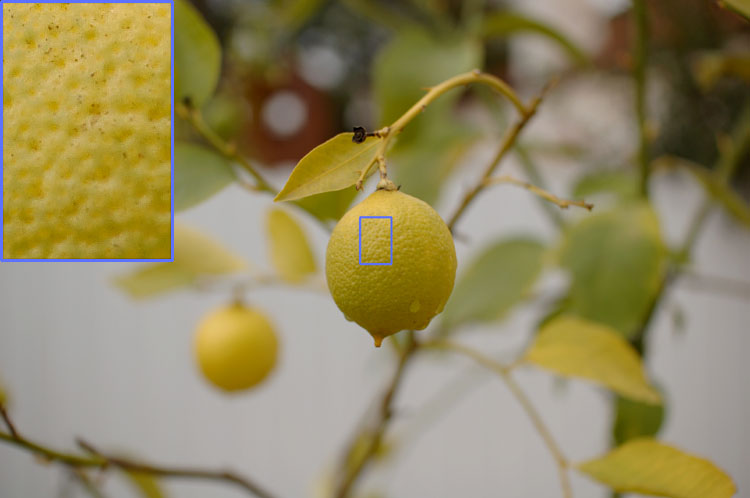 | | Model: NIKON D2X Exposure Time: 1/1600sec F Number: 2.8 Max Aperture Value: 1 Focal Length: 30mm Exposure Program: Aperture priority Exposure Bias Value: 0 ISO Speed Ratings: 125 Metering Mode: Center Weighted Average White Balance: Auto white balance Flash: Flash did not fire Focal Length In 35mm Film: 45 Date Taken: 2005:12:17 13:13:19 Color Space: sRGB |
And the second example:  | | Model: NIKON D2X Exposure Time: 1/350sec F Number: 2.8 Max Aperture Value: 1 Focal Length: 30mm Exposure Program: Aperture priority Exposure Bias Value: 0 ISO Speed Ratings: 125 Metering Mode: Center Weighted Average White Balance: Auto white balance Flash: Flash did not fire Focal Length In 35mm Film: 45 Date Taken: 2005:12:17 13:08:57 Color Space: sRGB |
Now I checked the sharpness using different apertures. The first test with aperture 1.4 was of surprisingly good quality: 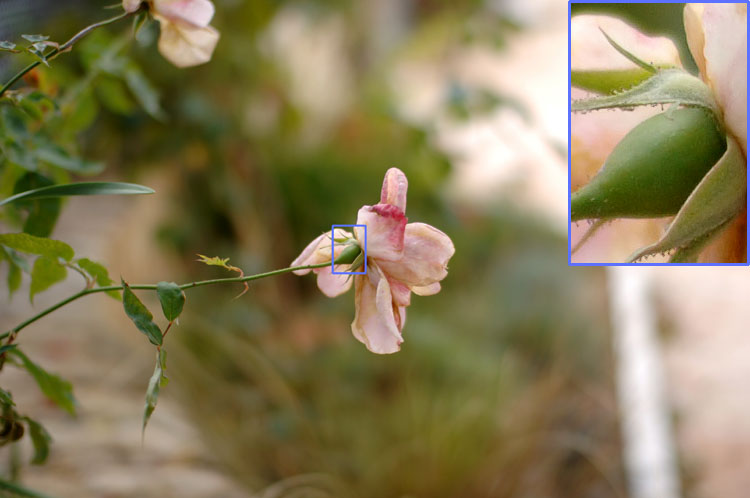 | | Model: NIKON D2X Exposure Time: 1/500sec F Number: 1.4 Max Aperture Value: 1 Focal Length: 30mm Exposure Program: Aperture priority Exposure Bias Value: 0 ISO Speed Ratings: 125 Metering Mode: Center Weighted Average White Balance: Auto white balance Flash: Flash did not fire Focal Length In 35mm Film: 45 Date Taken: 2005:12:17 13:06:05 Color Space: sRGB |
I repeated this test with a far more detailed subject – and here too – the lens did wonders:  | | Model: NIKON D2X Exposure Time: 1/160sec F Number: 1.4 Max Aperture Value: 1 Focal Length: 30mm Exposure Program: Aperture priority Exposure Bias Value: 0 ISO Speed Ratings: 125 Metering Mode: Center Weighted Average White Balance: Auto white balance Flash: Flash did not fire Focal Length In 35mm Film: 45 Date Taken: 2005:12:17 13:06:33 Color Space: sRGB |
I closed the aperture to 2.8 and selected an almost flat subject. The results are very good: 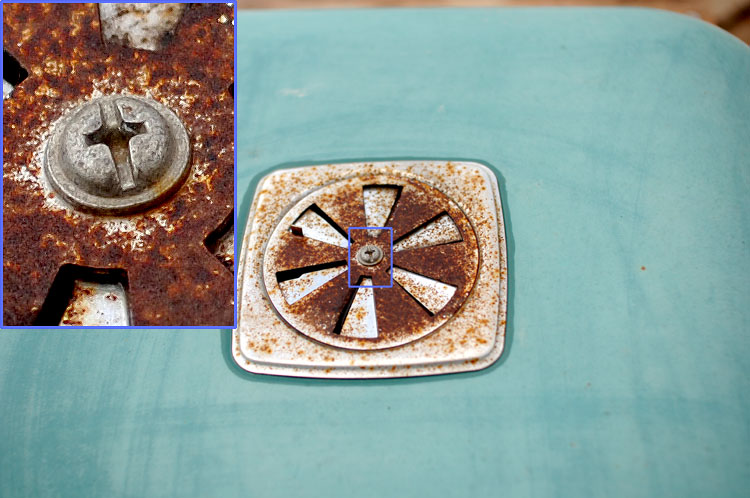 | | Model: NIKON D2X Exposure Time: 1/1500sec F Number: 2.8 Max Aperture Value: 1 Focal Length: 30mm Exposure Program: Aperture priority Exposure Bias Value: 0 ISO Speed Ratings: 125 Metering Mode: Center Weighted Average White Balance: Auto white balance Flash: Flash did not fire Focal Length In 35mm Film: 45 Date Taken: 2005:12:17 13:13:03 Color Space: sRGB |
The lens does not do as well for long distance shooting with open apertures. Even with aperture 2 (closed one stop before the maximal), the results are not more than reasonable. The picture is not really sharp in the far back: 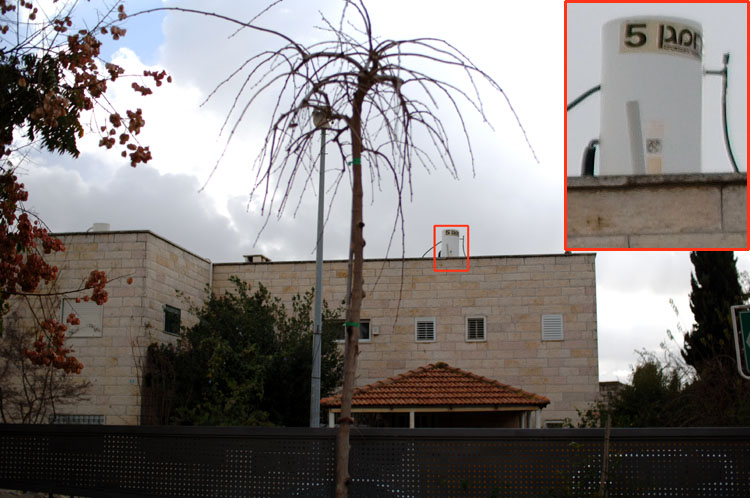 | | Model: NIKON D2X Exposure Time: 1/4000sec F Number: 2 Max Aperture Value: 1 Focal Length: 30mm Exposure Program: Aperture priority Exposure Bias Value: 0 ISO Speed Ratings: 125 Metering Mode: Center Weighted Average White Balance: Auto white balance Flash: Flash did not fire Focal Length In 35mm Film: 45 Date Taken: 2005:12:17 13:14:55 Color Space: sRGB |
This immensely improves with aperture 4, and one can say that from aperture 4 on, one can shoot at any distance. In any case, this lens is not used for shooting scenic view with an open aperture, so there is no real problem here.
The following is its sharpness at close range and aperture 4: 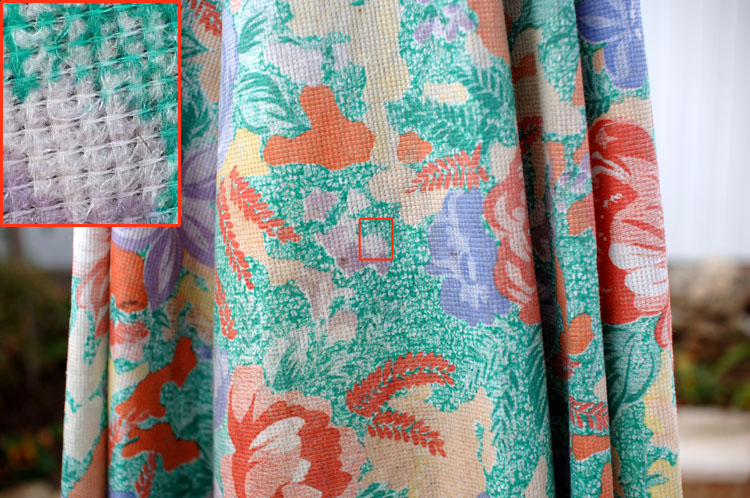 | | Model: NIKON D2X Exposure Time: 1/320sec F Number: 4 Max Aperture Value: 1 Focal Length: 30mm Exposure Program: Aperture priority Exposure Bias Value: 0 ISO Speed Ratings: 125 Metering Mode: Center Weighted Average White Balance: Auto white balance Flash: Flash did not fire Focal Length In 35mm Film: 45 Date Taken: 2005:12:17 13:11:01 Color Space: sRGB |
The result is really very good.
Many short focus lenses are not at their best with an open aperture focused to infinity, and as I said – for scenic view one usually closes the aperture.
Where would this lens be useful? It will be fine for taking street shots at night, with poor lighting conditions, for shooting at clubs and performances, for shooting festive events with natural lighting conditions, and so on.
Generally, at any place you cannot or do not want to shoot with a flash and at the same time keep low ISO.
Is it worth its price? Absolutely!
Is it worth paying 4 times the price for the equivalent Nikon lens? Only if you do not know what to do with your money or you have been given this lens as a present.
This lens performs almost like the superb Nikon-35/2 lens, but it has a slight angle advantage (30mm over 35mm) and a full stop advantage (1.4 vs. 2). Do you need this lens? This depends of course on your needs and your shooting habits.
It costs 40% more than the 50/1.4 – is it worth the difference? If you need the extra angle width – it is absolutely worth it. One must only take care not to place your friends at the frame edge with a wide-open aperture – they will not like the distortion it may present.
Also, keep in mind that this lens is designated for DSLR cameras with an APS sensor, with a crop factor and will not cover the whole frame in FF cameras.
Depending on your future plans – you have to decide if it is worth you investing in it. Sigma certainly did a good job here. |





